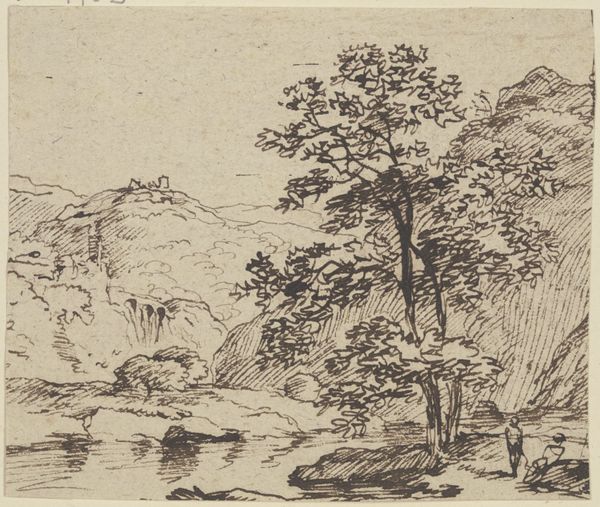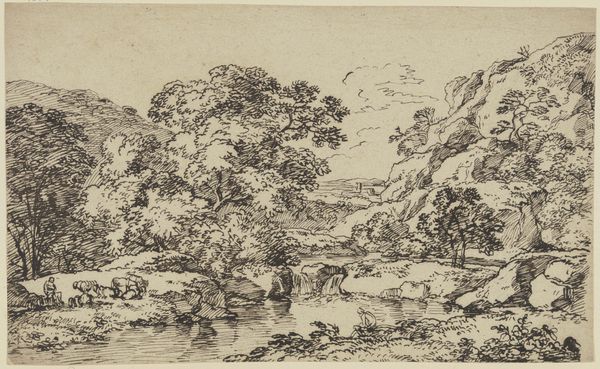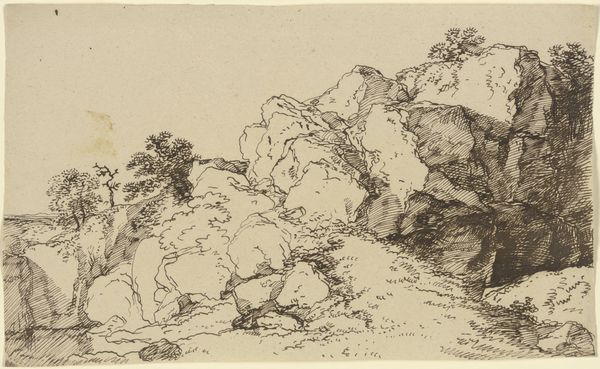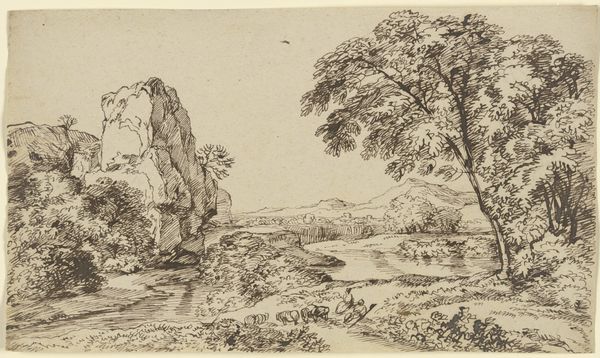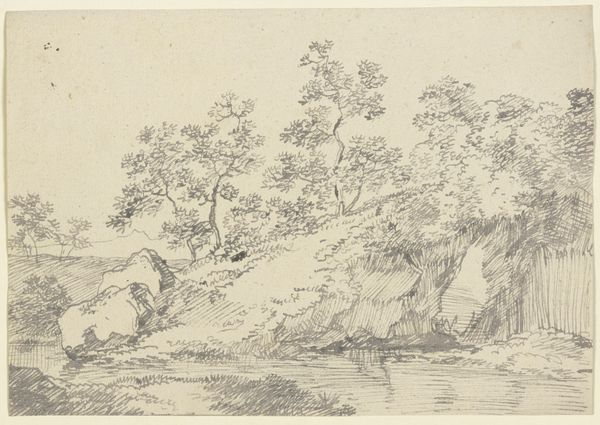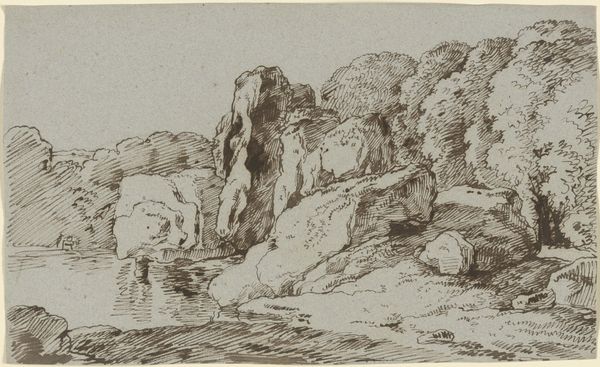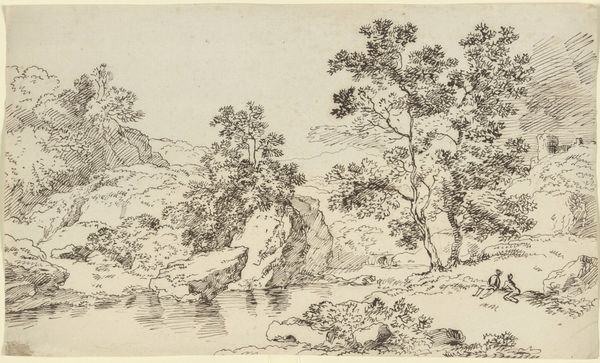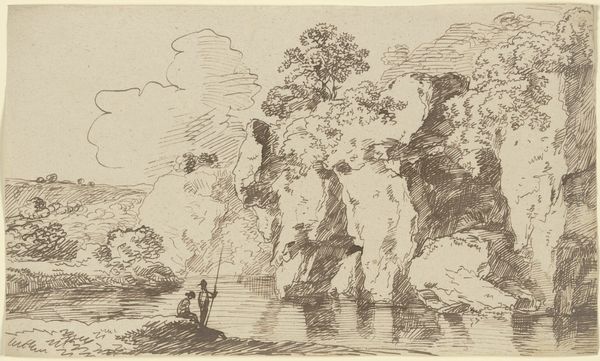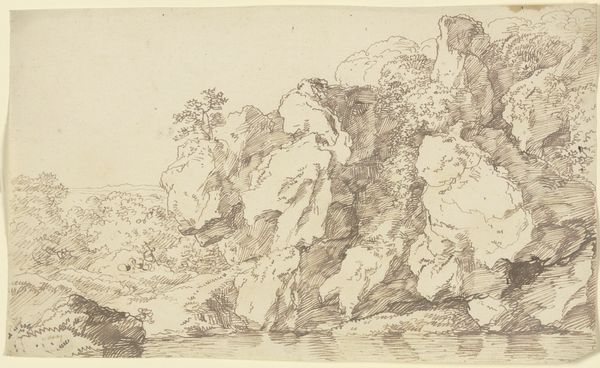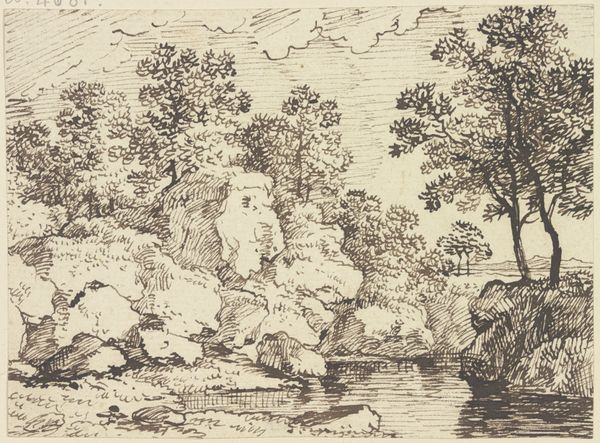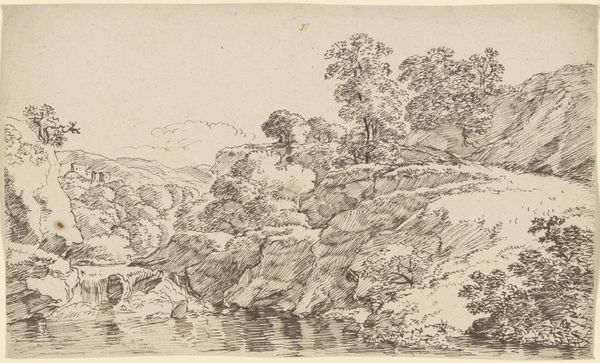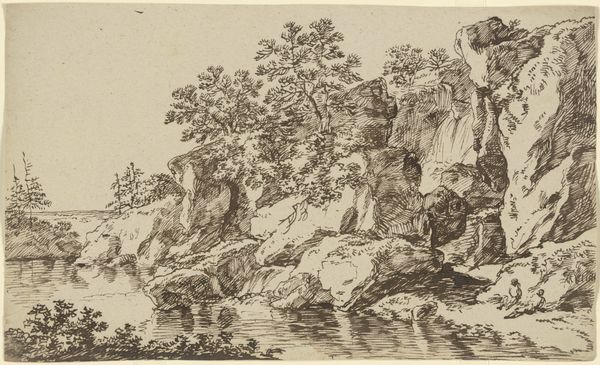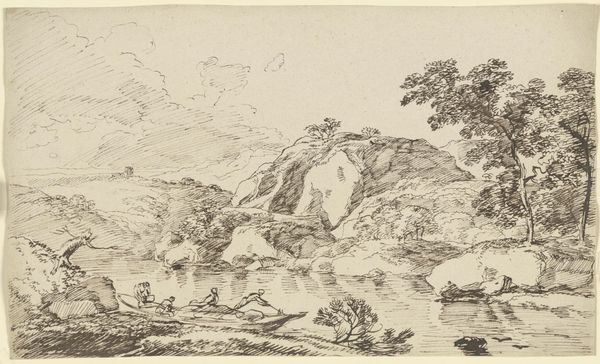
drawing, paper, ink
#
drawing
#
landscape
#
paper
#
ink
#
romanticism
Copyright: Public Domain
Curator: Up next, we have Franz Kobell’s "Gebirgslandschaft mit Staffagefiguren," rendered in ink on paper. It resides right here at the Städel Museum. Editor: My first thought is…tranquil. Even with the stark black ink, the overall feeling is remarkably peaceful. The gentle ripples in the water, those stooping figures… there’s a quiet story unfolding here. Curator: Quiet indeed! The way Kobell uses layered hatching to define those rocky crags and that single, rather majestic tree speaks volumes. One has to wonder about the labour put in by the artist as well as the figures in the artwork. What are those folks doing in the water, anyway? Editor: Ha, that’s exactly what I was pondering! Are they fishing? Searching for something? The mystery almost adds to the landscape’s allure. I appreciate how he brings those touches to a drawing where he allows a small glimpse of human occupation in a largely "empty" mountainous area. Curator: Precisely! It challenges that high/low art binary, right? But then look at how he defines space with the varying ink density, creating atmospheric perspective even within this monochromatic work. How fascinating he also seems to be very precise about the location as the artwork’s name translates roughly as "Mountainous Landscape with Figures". I wonder if he created other staffage figures on their journey? Editor: Agreed, he seems to have studied nature intensely. One almost wonders whether it was a way for the privileged to show they understood nature but would rather be separate from it. Still, this intimate landscape gives a certain reverence that really makes us look and re-look! And it all originates from simple materials, ink, paper… bound labor if we consider it closer. Curator: Exactly! Thinking about those ink lines – each stroke deliberate, layering and building to convey both form and light—it reminds me that landscape drawing allowed the artist to really be more reflective, both as a technical practice as an opportunity to really muse at an image they liked. I think, this artwork, however small and seemingly straightforward, embodies the grandeur of Romanticism, without relying on color, grand gestures, or overly dramatic scenery. It relies on craft itself! Editor: Beautifully said. It’s these sorts of pieces that make us think more deeply about material history itself. I have changed my mind—what appeared to be simply idyllic really seems so loaded with different issues to explore. Curator: Likewise. From a simple-seeming vista to material and intellectual journeys… art continues to surprise us both.
Comments
No comments
Be the first to comment and join the conversation on the ultimate creative platform.
